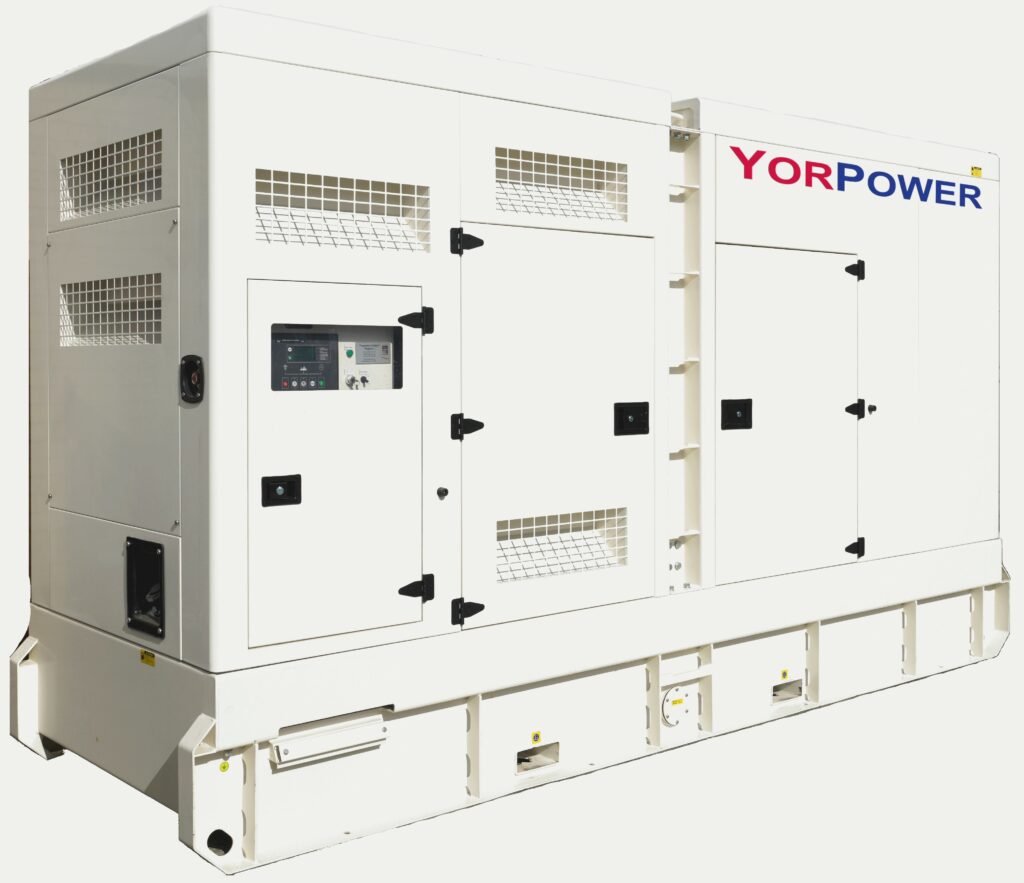Generator Enclosures from YorPower
Working with our specialist fabricators YorPower can provide everything from bespoke generator enclosures where noise breakout is below 60dB(A) at 1M to a basic weather protection enclosure, where noise break out is not relevant. The generator enclosure acts as a protective barrier for generators that are being housed outdoors and can be tailored to suit the local environment.
Soundproof generators
A sound proof canopy, a sound proof container or sound attenuated enclosure are just some of the expressions used for making generators and reduce noise breakout. To make a generator as quiet as possible the air needs to travel further, dissipating the sound it carries prior to exiting the enclosure. Generator sets that are enclosed are sometimes incorrectly called silent generators… they are never completely silent.
How a to reduce noise
Generators that are not covered by an enclosure or close fit canopy are loud. So loud that working within 7 meters, depending on engine size would mean you would not be able to hear properly. Local Authorities have their own noise level guidance criteria to determine what sound levels are permissible when plant is located near to domestic dwellings.
What Goes In to a Sound Proof Generator Enclosure?
Most sound proof generators are treated with a composite material, typically they are layers of hard material intended to reflect the sound waves back into the enclosure. As well as this, there are layers of soft, porous and resilient material which have sound absorbent properties, which convert that energy into heat. Different frequencies are absorbed by varying materials. One method might work perfectly for absorbing very high frequency noise but poor at lower frequencies. A different method or material might be better at deflecting middle frequencies sound waves, but not so good at the high end. That is why most modern sound proof generators use several layers of different material types. Higher frequency sound is typically absorbed best by highly porous materials which can channel these smaller waves deep into the material, scattering and absorbing them. Lower frequency sound is a very different challenge. A generator enclosure can be engineered for a specific application and type of generator – or a specific and generic model and in order to ensure that the sound proof enclosure is as effective, it needs to be designed and tested.

